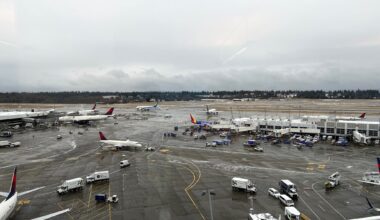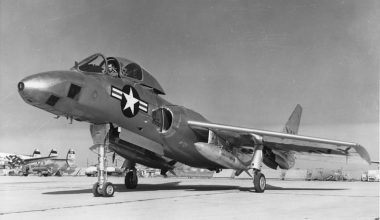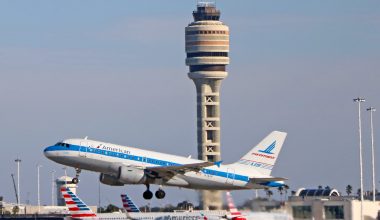Have you ever noticed that pilots wear sunglasses for their flights? Wherever pilots are, sunglasses are nearby. Is it just to look cool or something as the pilot profession is glamorous. One can venture into the sky in an aircraft at a frenetic pace. Sunglasses for pilots are eye care with a fashion. Pilots need to wear sunglasses that can protect against the sun’s ultraviolet radiation. As much as wearing sunglasses is about fashion and style, it is equally about protecting the valuable asset of pilots from harmful ultraviolet rays. While we are on the ground, the hazardous solar radiation emitted by the sun is filtered out by the earth’s atmosphere. So it’s not a big deal here. But it’s not the same case as you elevate higher in the sky. For every 1000 feet altitude you elevate, the sun emits its radiation 5% stronger. So, if you calculate for an aircraft flying at 10000 feet, the amount of UV radiation surmounts by 50 % more than what is received on the ground.

It is important to know about the best pilot sunglasses. Now, on what basis can we attribute sunglasses to be the best? The best pilot sunglasses have the following features:
- Provides 100% protection against UVA and UVB exposure.
- Provides clarity of vision and minimal color deformation.
- Non-polarized as polarization can impede cockpit displays.
- Aids the dark adaptation process, which is detained by tedious exposure to bright rays of sunlight.
- Minimize the impact of harsh sunlight
- Reduce the eye’s fatigue and serve as a guard to ocular tissues against the possibility of sudden decompression or aerobic maneuver.
Also Read: Best Aviation Headsets

Some of the best pilot sunglasses that act as shields for the most important sensory property (eyes) are as follows:
1. Ray-Ban Aviator

Ray-Ban Aviator is still as popular today as it was in its inception, i.e., in 1937, when it was first designed for the US military. This iconic style of sunglass has its own benchmark featuring the highest clarity lenses. They are made using the most modern technology. As Ray-Ban itself is praised for its authenticity, premium lenses, its classic product Ray-Ban Aviator possesses a metal frame and a teardrop shape. It fits the technical requirements of pilot sunglasses and makes the pilot look cool too. A lot of pilots prefer Ray-Ban Aviator because of its excellent optics and vision optimizing performance.
2. Randolph aviators

Another best pilot sunglass, HGU-4/P design since 1962, is Randolph aviators, which can hold broad ranges of myriad refractive power lenses. Since the launch of high refractive index lenses, this sunglass permits the correct vision and allows the pilot to clear the spectacles while wearing a flight helmet. They come with metal frames in gold color and offer 98% to 100% UV rays protection. The nose pads add to the comfort with adjustable silicone gel, and the arms also have extra padding. Measuring 55mm wide and 44mm tall, they maintain a striking balance between form and functions.
3. Randolph Concorde Aviator

It is named after Concorde supersonic passenger jet. Introducing the iconic large teardrop shape, this aviator-style sunglass has exceptional American craftsmanship with engineered tints and superior lens coating. They are built to military standards, and this style is loved and trusted by pilots worldwide.
4. American Optical Original Pilot Sunglasses

Made and styled in the United States, American Optical Original Pilot Sunglasses have made it through the golden jubilee, designed to last, styled with a gold frame. The temple is a bayonet to ensure a comfortable fit. Providing 100% UV protection, they are available in brown, green, gray tints for polycarbonate lenses. One can opt for American Optical Pilot sunglasses for high quality and durability.
5. Serengeti Summer Drivers
These sunglasses have non-polarized lenses. They are ideal for pilots who can cozily fit as they are lightweight in an espresso color gradient. They use quality materials like metal titanium frames and mineral glass. The nose pads of Serengeti Summer Drivers are easily graspable due to silicone gel. Temple and bridge of glasses measure about 130 mm and 16 mm, respectively. The non-polarized lenses of this sunglass make it easier for pilots to read flight screens, providing a clear view of the instrument panel.
The other best pilot sunglasses are Ray-Ban RB2025 Aviator, Serengeti Velocity, Oakley Holbrook Sunglasses, Randolph Sportsman Aviator, Ray-Ban Wayfarer, etc.
Now having talked about the best pilot sunglasses, let’s discuss
Why pilots wear sunglasses?
As eyes are the light of one’s body, it is vital to protect and safeguard them. Pilots receive bright sunlight at 35000 feet. There is less air at such a height to protect the eyes. Higher altitudes have disadvantages of less air and more unbearable brightness. Sunglasses ensure the sunlight doesn’t blind pilots. They require the best sunglasses, which have minimal distortion to enable them to see other aircraft. Flying an aircraft requires good eyesight. Since pilots are responsible for the lives of every people on board, they must do everything possible to protect their vision under all circumstances.

If eyes are blurred or don’t see clearly, then it can be career-ending for pilots. Increased exposure at high altitudes makes pilots susceptible to eye problems such as cataracts. They need sunglasses that can withstand all the UV rays and provide clear vision inside and outside the cockpit. They need to be capable enough to identify air traffic, airport symbols, markings, and cockpit instruments such as a checklist, flight engine buttons, manuals to handle emergencies, etc. So, pilots don’t wear sunglasses only to look cool; indeed, their vision is of utmost importance to them that they can compromise messing up with their eyes.
The pilot sunglasses possess anti-glaring properties. Glaring usually impact the pilot’s vision to read the flight instruments and temporarily takes their vision away. Many pilots get eyes irritation if they avoid wearing sunglasses. Being a pilot requires flying at different places (which we all wish to), but weather conditions are not the same all the time and at all the places. Eyes are prone to changing weather, and changing UV rays can damage a pilot’s eyes. Hence, pilots wear sunglasses.
Now the final question is what features or characteristics should we take into account when getting pilot sunglasses? The key factors to remember are:
i. Whether the lens is polarized or non-polarized
The polarized sunglass can possibly interact with materials in the cockpit environment, so they incorporate anti-glare filters. They can minimize pilots’ reaction time in ‘see and avoid’ traffic conditions due to the reflection of light off the shiny surfaces coming from the windscreen or other aircraft’s wings due to visibility interference by polarized lenses. But non-polarized lenses are capable of protecting the pilot’s eyes from sun glare and UV light. The screens of cockpit displays are incompatible with the polarized sunglasses.
ii. Tint
Tinted sunglasses minimize the surrounding brightness. Neutral gray tint has a light transmittance between 15% and 30%. The other colors, such as green, brown appear to be fancy, but they are challenging to look through for signs and signals.
iii. Lens materials
Crown glasses used in the lens have suitable optical property as it is more scratch-resistant, easily fabricated, heavyweight. Similarly, CR-39 plastic (monomer plastic) has strong strength, is lightweight, easily scratched. Likewise, polycarbonate plastic lenses are the strongest material and lighter than CR-39 and have built-in UV protection. They are coatable and require special fabrication.
iv. Frames
Choice of the frame is merely a personal preference, yet it can interfere with communication headsets used by pilots. It should be unbreakable while remaining light enough to be comfortable. They must be able to function properly.
v. Temples
The temples of the sunglasses extend over the ears. Also known as an arm of sunglass, there are various temples like bayonet, cable, skull temples, etc.
vi. Photochromic lenses
They aren’t usually recommended for flights. When they are exposed to bright light, they darken, and under dim light, they lighten. To revert back to light once they are exposed to bright light requires quite a long time.
vii. Fit
The pilot sunglasses must be such that they won’t get easily knocked off the face. They must fit well around the head and shouldn’t be displaced while maneuvering or dealing with turbulence.
Hence to be useful in aircraft cockpits, the sunglasses should have attributes like non-polarized lenses, lightweight, good glare protection.
The pilot sunglasses, as the eyewear accessories, have now become part of the pilot’s uniform. Make sure to see from the distance standpoint with the best pilot sunglasses. They provide up close and intermediate vision so that pilots can identify other airplanes, navigate their route clearly and avoid turbulence and other life-threatening conditions while being able to read instruments and written materials on the flight deck.
Pilots can enjoy their flights with the best pilot sunglasses with the sassy look and best eye protection. Pilot sunglasses add to the flight safety with style.






